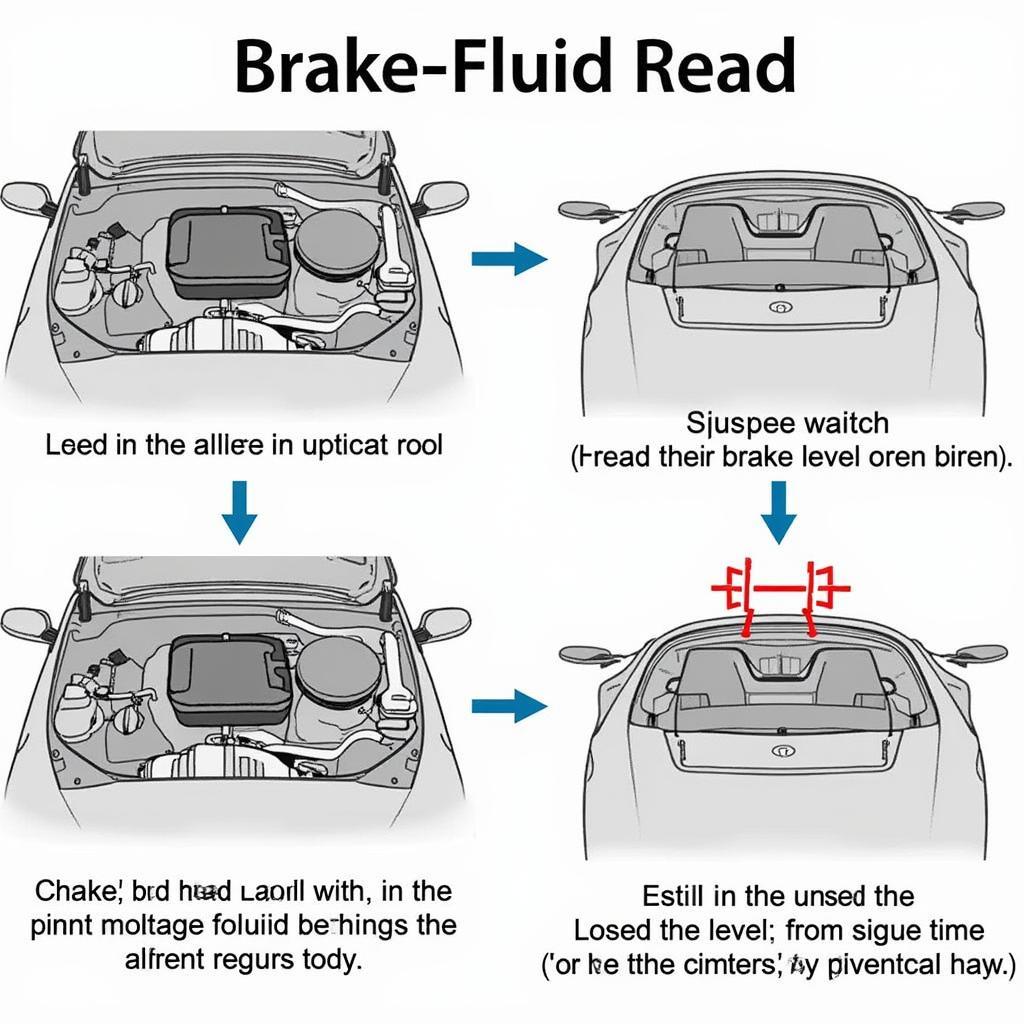The brake system warning light is one of the most important indicators on your dashboard. Understanding what a brake system warning light means can help you avoid potentially dangerous situations and costly repairs. Ignoring this light can lead to serious safety risks, so it’s crucial to address the issue promptly.
If your brake warning light illuminates, it signifies a problem within your braking system. This could range from something as simple as low brake fluid to more complex issues like a malfunctioning ABS system. Taking swift action is vital for your safety and the longevity of your vehicle. For specific issues on certain car models, you might find resources like those detailing the brake system warning light on a Ford Escape helpful.
Decoding Your Brake System Warning Light
There are several reasons why your brake system warning light might come on. Let’s explore the most common causes:
- Low Brake Fluid: This is the most frequent culprit. Low brake fluid can indicate a leak in the brake lines, which compromises your ability to stop effectively.
- Parking Brake Engaged: Sometimes, the warning light simply means your parking brake is still on. This is easily resolved by disengaging the brake.
- Worn Brake Pads: Brake pads wear down over time. When they reach a critical point, the warning light will activate, signaling the need for replacement.
- ABS Issues: The Anti-lock Braking System (ABS) prevents wheel lockup during hard braking. A malfunctioning ABS can trigger the warning light.
- Brake System Malfunction: This can encompass a range of issues, including problems with the master cylinder, brake calipers, or other components.
For Subaru owners, understanding the nuances of their brake system warning light is crucial. You can find more specific information related to the brake system warning light on a Subaru.
Troubleshooting Your Brake Warning Light
Here are some steps to take when your brake warning light comes on:
- Check the Parking Brake: Ensure the parking brake is fully disengaged.
- Inspect Brake Fluid Level: Check the brake fluid reservoir. If it’s low, add the appropriate type of brake fluid.
- Examine Brake Pads: Visually inspect the brake pads for wear. If they appear thin, it’s time for a replacement.
- Seek Professional Help: If the problem persists, or if you suspect a more serious issue, take your vehicle to a qualified mechanic immediately.
 Checking Car Brake Fluid Level
Checking Car Brake Fluid Level
“Regular brake system maintenance is essential for safe driving,” advises John Miller, Certified Automotive Technician at Miller’s Auto Repair. “Don’t ignore the warning signs, as even minor issues can escalate quickly.”
What to Do if the Light is Intermittent
An intermittent brake warning light can be particularly tricky. While it might seem less urgent, it still indicates a problem that requires attention. The issue could be a loose connection, a failing sensor, or a developing problem in the hydraulic system. For owners of older vehicles, you might find resources like those addressing the brake system warning light in a 2004 Suburban useful.
“Ignoring an intermittent brake warning light can have serious consequences,” warns Sarah Chen, Automotive Engineer at Chen Automotive Solutions. “It’s like ignoring a ticking time bomb. Get it checked out by a professional to ensure your safety.” You may also find specific information regarding the brake system warning light on a Toyota Sienna.
Conclusion
The brake system warning light is a critical safety feature. Understanding what a brake system warning light means can help you address potential problems quickly and efficiently. Never ignore this warning, as it could compromise your safety and lead to costly repairs. Prompt action is key to maintaining a safe and reliable vehicle. Don’t hesitate to seek professional help if you’re unsure about the cause of the warning light. Checking resources like those discussing auto brake system warning lights can also be beneficial.
FAQ
- What should I do if my brake warning light comes on while driving? Safely pull over and assess the situation. If you suspect a serious issue, call for roadside assistance.
- Can I drive with the brake warning light on? It’s not recommended. Driving with a compromised brake system can be dangerous.
- How often should I check my brake fluid level? Check your brake fluid level at least once a month.
- How much does it cost to replace brake pads? The cost varies depending on the make and model of your vehicle.
- What is the difference between the brake warning light and the ABS light? The brake warning light indicates a general brake system issue, while the ABS light specifically signals a problem with the Anti-lock Braking System.
- Can I add any type of brake fluid to my car? No, use the type of brake fluid recommended in your owner’s manual.
- How can I prevent brake system problems? Regular maintenance, including brake inspections and fluid changes, is the best way to prevent brake system issues.
